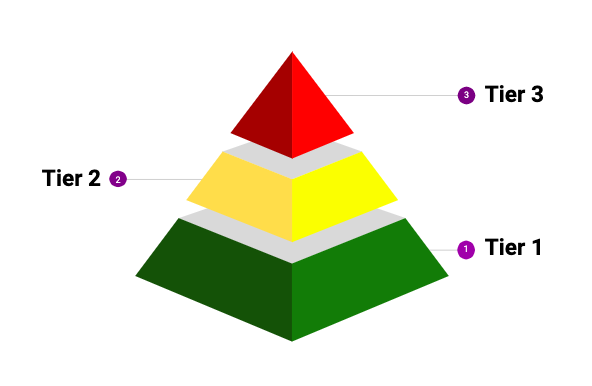Tier 1
As instructors we are very good at providing support to students academically. We are able to support student at all three levels. We must also do this behaviorally. Tier 1, in its most basic form is simply our rules, routines, and procedures. It is the system that runs a classroom. When we have a solid foundation, it enables us to support more structured interventions.
At the Tier 1 level, we can collect data on how often rules are broken and which rule is broken. If we have data that shows that our students break 'following adult directions' 19 times a day, we can with confidence conclude that as the teacher we need to reteach 'following adult directions'.
Tier 2
Tier 2 interventions are those supports we apply to some students in our classes. Think about when you have some students who are struggling to grasp an academic concept. You pull those students aside and reteach them, or provide instruction in a new way in order to help them learn and solidify the concept. This is the same thing we do in behavior. Some students need additional support to learn new behavior skills, so we put additional supports in place to help them. To collect data in Tier 2 we can for example use check in-check out data on how many point cards a student is earning a day and what reward the student selects.
Tier 3
Tier 3 interventions are interventions focused on very specific needs of an individual. In subject area this would be an individualized homework or additional practice opportunity for a specific struggling reader. In behavior real we mean Behavior Plans including FBA/BIPs, individualized schedules and attendance. Data collection tools should be built into the behavior intervention plan and include student observations. Please note, most behavior Tier 3 interventions require parent permission. Exclusionary time out and mechanical restrain additionally need a behavior specialist included on the team. Tier 3 interventions are NOT reserved for special education students only!
Four Prong Approach to Instruction:


